New State-of-the-Art Facility Doubles Seattle Children’s Cardiac Surgical Capacity and Exceeds Safety Standards
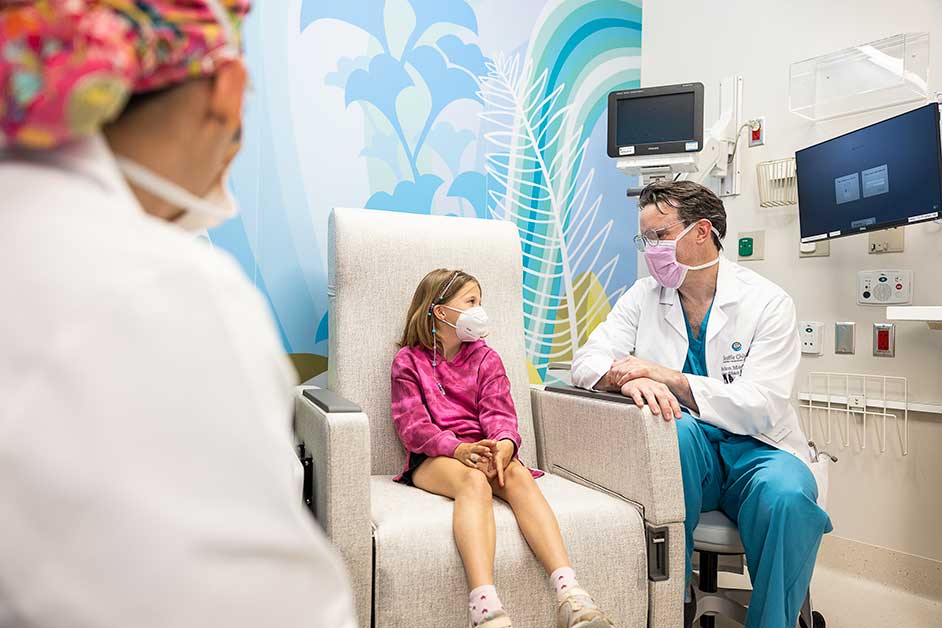
Dr. Brian Morray, director of Seattle Children’s Cardiac Catheterization Laboratories, confers with a cardiac patient in one of Forest B’s new spaces.
Seattle Children’s Heart Center has a new, state-of-the-art home in Forest B, the 310,000-square-foot addition to Seattle Children’s hospital campus specifically designed for transformative, patient-centered care.
The Heart Center occupies nearly 30,000 square feet on the sixth floor of the new building. The dedicated space doubles the number of operating rooms devoted to cardiac patients and co-locates the cardiac induction rooms, operating rooms (OR), catheterization labs, post-anesthesia care unit (PACU) recovery rooms and cardiac ICU into what is known as the Heart Center Suites. Although the cardiac ICU is technically located in Forest A, it is separated from the ORs by a three-foot walkway.
This co-location of services greatly reduces patient transport time and facilitates those times when a patient needs to go quickly from the catheterization laboratory to surgery, or from surgery to a cath lab.
Dr. Brian Morray, director of Seattle Children’s Cardiac Catheterization Laboratories, said “with the new facilities, it's now just a matter of literally moving the child to the room adjacent rather than down the hall or going to a different building. In co-locating those services, I think we will really enhance patient outcomes and improve patient safety.”
The new co-located space also enhances the relationship between cardiology and cardiac surgery. According to Morray, “it enables our skillset to enhance surgical outcomes and the surgical skillset can enhance our outcomes in the cath labs. And that's a very important and unique feature of this new space that isn’t found in many other pediatric facilities.”
A focus on patient safety
Seattle Children’s Heart Center is one of the top ranked programs of its kind in the United States. The Heart Center team includes more than 70 board-certified pediatric surgeons and cardiologists who treat children from before birth through young adulthood with all kinds of heart defects – from the most common to the most complex and rare. Our team performs more complex pediatric heart procedures than any other provider in the region and is rigorously focused on safety and achieves some of the top patient outcomes in the nation.
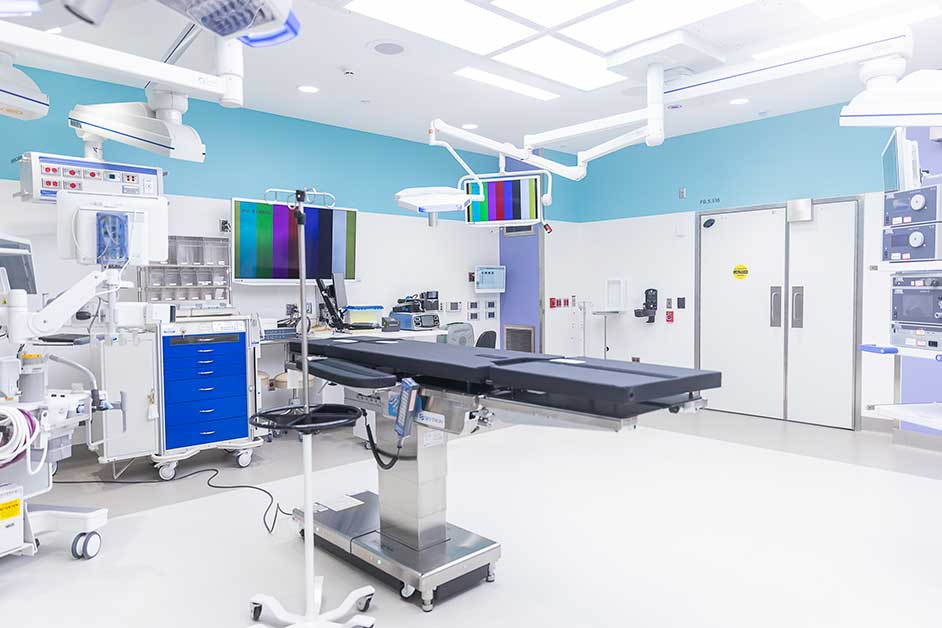
One of the Heart Center’s new state-of-the-art operating rooms.
To ensure a safe environment in the new Forest B Heart Suites, the air supply for the ORs and catheterization labs is filtered through HEPA (99.97%) filters twice, once at the air handling unit prior to the air entering the duct system and a second time in the ceiling of each room just before the air enters the space. Washington State code calls for one level of MERV 14 (90 to 95%) filtration in operating room environments either at the air handling unit or at the room.
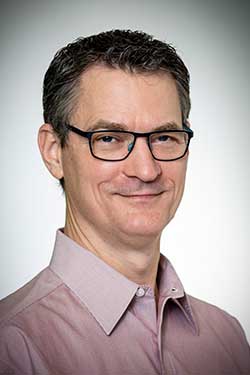 Dr. Michael McMullan, Division Chief of Congenital Cardiac Surgery
Dr. Michael McMullan, Division Chief of Congenital Cardiac SurgeryDr. Michael McMullan is the division chief of Congenital Cardiac Surgery and co-director of the Heart Center at Seattle Children’s. He says, “this new building exceeds all of the normal standards to make sure our patients are safe. The fact that the ventilation goes so far beyond the standard is just one more example of how we've gone all out to build the safest and most technologically advanced facility possible.”
Patient safety is also addressed in the new catheterization labs. Both labs are equipped with the most up to date Siemens fluoroscopy equipment, which deliver lower doses of radiation to patients. According to Morray, “Not only are the lower radiation doses important for our patients’ long-term health, but the new equipment gives us sharper X-ray images, which allows us to do more complicated procedures and work with smaller children.”
Able to meet the growing need for cardiac services
A key factor in the Forest B expansion is the need to meet the region’s growing need for cardiac and other pediatric services. Not only has the Heart Center’s physical space increased, but the team has also expanded to optimally utilize the new spaces. Adds McMullan, “we've increased the number of pediatric cardiac anesthesiologists, pediatric cardiac OR nurses, pediatric cardiac perfusionists and others. So, it's not just a bigger building, but because we have this new capacity, we've expanded the team to fully utilize it.”
The increased capacity allows the Heart Center team to get the kids in when they need the surgery, with the flexibility to accommodate babies that are born and need urgent surgery. According to McMullan, the new building “should prevent us from having to perform procedures late at night or canceling any surgeries or procedures because of lack of capacity.”
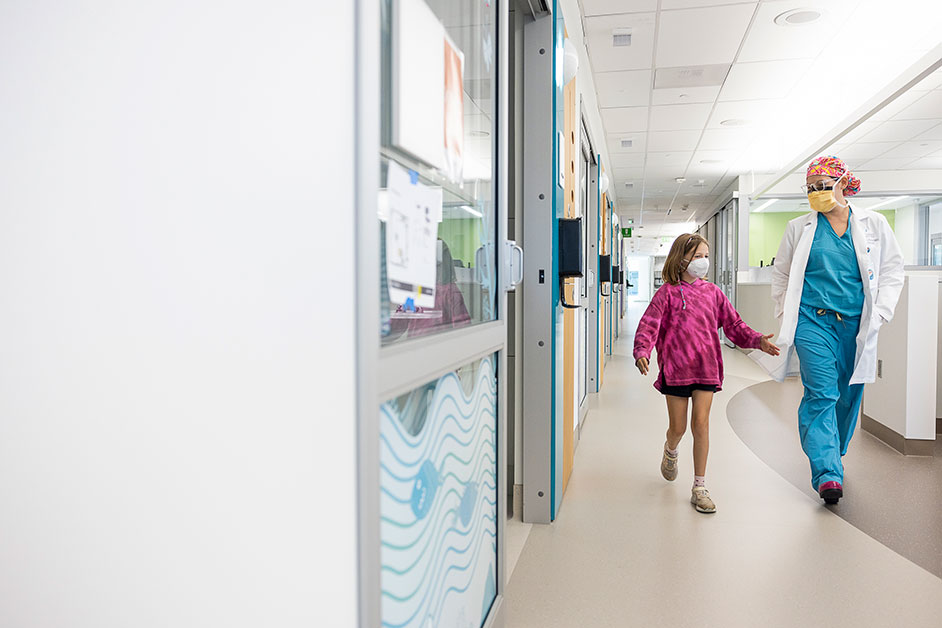
Cardiac Surgeon Dr. Christina Greene with patient in Forest B
Designed for comfort and safety, with an eye to the future
Forest B’s spaces are designed to be welcoming, warm and inclusive – with plenty of interesting visual niches for children to notice and explore. Induction rooms are located adjacent to each OR and catheterization lab, which allow families to come back and be with their children right up until they into the operating or procedure room. Allowing patients to spend more time with their families prior to undergoing a surgery or procedure has been shown to reduce patient stress and has the potential to improve patient outcomes.
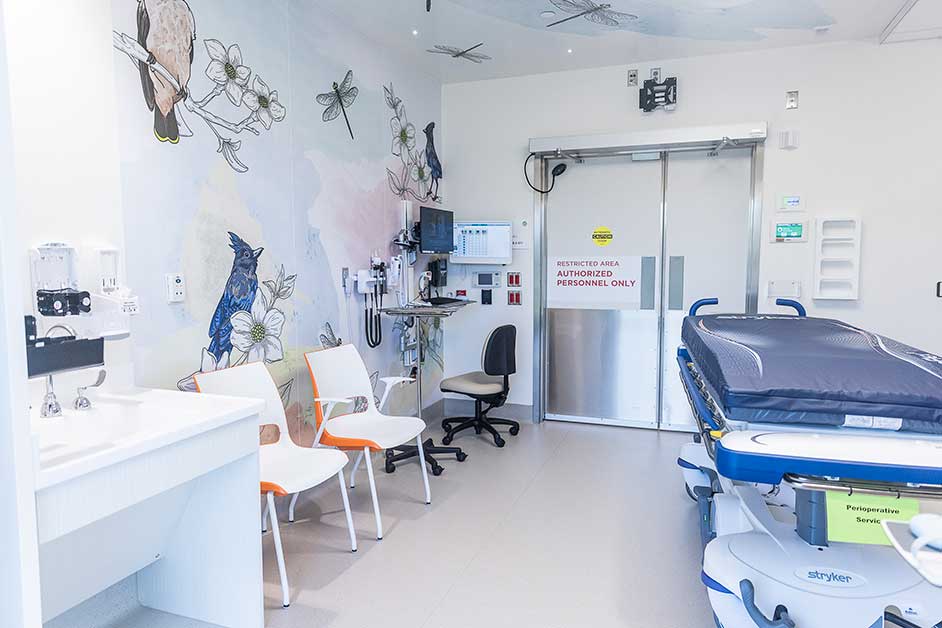
Induction room adjacent to Heart Center operating room
Heart Center providers designed the new ORs and catheterization labs from the ground up with an emphasis on safety and outcomes and with an eye to the future.
A full broadcast studio is built into the new catheterization labs, which allow Heart Center providers to record and broadcast live procedures for regional providers to see and observe in real time, or to transmit tape delayed cases for educational purposes.
New specialized profusion equipment supports the Heart Center’s Blood Conservation Program, which is the standard of care for all patients at Seattle Children’s. According to McMullan, “this new equipment will allow us to use less blood and, in many cases, no blood. Our goal is to avoid the use of blood for every patient we can.”
The new Heart Center suites on Seattle Children’s hospital campus have been open since July, 2022. According to Morray, “we have the capability to get patients in from the region quickly, to do all the procedures that are necessary for all our patients and to do them well. We're not limited in any way in our ability to respond quickly and to do really complex procedures on the smallest of children.”